 W
WA golden age is a period in a field of endeavor when great tasks were accomplished. The term originated from early Greek and Roman poets, who used it to refer to a time when mankind lived in a better time and was pure.
 W
WThe golden age of alpinism was the decade in mountaineering between Alfred Wills's ascent of the Wetterhorn in 1854 and Edward Whymper's ascent of the Matterhorn in 1865, during which many major peaks in the Alps saw their first ascents.
 W
WThe American Century is a characterization of the period since the middle of the 20th century as being largely dominated by the United States in political, economic, and cultural terms. It is comparable to the description of the period 1815–1914 as Britain's Imperial Century. The United States' influence grew throughout the 20th century, but became especially dominant after the end of World War II, when only two superpowers remained, the United States and the Soviet Union. After the dissolution of the Soviet Union in 1991, the United States remained the world's only superpower, and became the hegemon, or what some have termed a hyperpower.
 W
WThe Kingdom of Armenia, also the Kingdom of Greater Armenia, or simply Greater Armenia, sometimes referred to as the Armenian Empire, was a monarchy in the Ancient Near East which existed from 321 BC to 428 AD. Its history is divided into successive reigns by three royal dynasties: Orontid, Artaxiad and Arsacid (52–428).
 W
WSometimes dubbed the Golden Age of Aviation, the period in the history of aviation between the end of World War I (1918) and the beginning of World War II (1939) was characterised by a progressive change from the slow wood-and-fabric biplanes of World War I to fast, streamlined metal monoplanes, creating a revolution in both commercial and military aviation. By the outbreak of World War II in 1939 the biplane was all but obsolete. This revolution was made possible by the continuing development of lightweight aero engines of increasing power. The jet engine also began development during the 1930s but would not see operational use until later.
 W
WThe Golden Age of Baseball, or Baseball's Golden Era, is the period from about 1920 to 1960. The golden era is the time period immediately following the dead-ball era but prior to what is now called the modern era. There is no exact timeframe in any of these eras. MLB considers the post World War II era to be the beginning of the modern age, which places the golden era between the end of World War I and the end of World War II.
 W
WThe post–World War II economic expansion, also known as the postwar economic boom or the Golden Age of Capitalism, was a broad period of worldwide economic expansion beginning after World War II and ending with the 1973–1975 recession. The United States, Soviet Union, Western European and East Asian countries in particular experienced unusually high and sustained growth, together with full employment. Contrary to early predictions, this high growth also included many countries that had been devastated by the war, such as Japan, West Germany and Austria (Wirtschaftswunder), Singapore, South Korea, Belgium, France, Italy and Greece. Even countries that were relatively unaffected by the war such as Sweden experienced considerable economic growth.
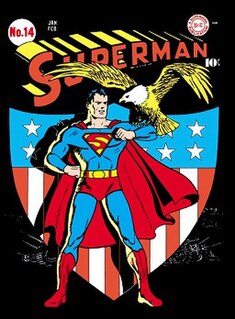 W
WThe Golden Age of Comic Books describes an era of American comic books from 1938 to 1956. During this time, modern comic books were first published and rapidly increased in popularity. The superhero archetype was created and many well-known characters were introduced, including Superman, Batman, Captain Marvel, Captain America, and Wonder Woman.
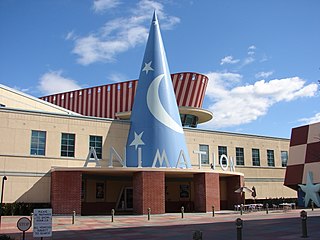 W
WThe Disney Renaissance was the period from 1989 to 1999 during which Walt Disney Feature Animation returned to producing critically and commercially successful animated films that were mostly based on well-known stories, much as the studio did during the era of Walt Disney during the 1930s to 1960s. The resurgence allowed Disney's animated films to become powerhouse successes at the domestic and foreign box office, earning much greater profit than most of the Disney films of previous eras.
 W
WDutch Golden Age painting is the painting of the Dutch Golden Age, a period in Dutch history roughly spanning the 17th century, during and after the later part of the Eighty Years' War (1568–1648) for Dutch independence.
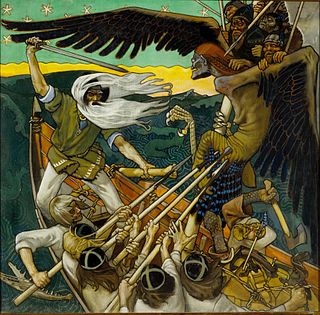 W
WThe Golden Age of Finnish Art coincided with the national awakening of Finland, during the era of the Grand Duchy of Finland under the Russian Empire. It is believed to span an era from the late 19th Century to the early 20th Century, approximately 1880 to 1910. The epic poetry form known as Kalevala, developed during the 19th Century, provided the artistic inspiration for numerous themes at the time, including in visual arts, literature, music and architecture; however, the "Golden Age of Finnish Art" is generally regarded as referring to the realist and romantic nationalist painters of the time. Notable figures of the time include Akseli Gallen-Kallela, Pekka Halonen, Albert Edelfelt, Jean Sibelius, Eino Leino, Helene Schjerfbeck, Eero Järnefelt, Emil Wikström and Eliel Saarinen.
 W
WThe Georgian Golden Age describes a historical period in the High Middle Ages, spanning from roughly the late 11th to 13th centuries, during which the Kingdom of Georgia reached the peak of its power and development. In addition to military expansion, this period saw the flourishing of medieval Georgian architecture, painting and poetry, which was frequently expressed in the development of ecclesiastic art, as well as the creation of first major works of secular literature.
 W
WGolden age hip hop is a name given to mainstream hip hop music created from the mid-1980s to early-mid 1990s, particularly by artists and musicians originating from the New York metropolitan area. An outgrowth of the new school hip hop movement, it is characterized by its diversity, quality, innovation and influence on hip hop after the genre's emergence and establishment in the old-school era, and is associated with the development and eventual mainstream success of hip hop. There were various types of subject matter, while the music was experimental and the sampling from old records was eclectic.
 W
WClassical Hollywood cinema is a term used in film criticism to describe both a narrative and visual style of filmmaking which became characteristic of American cinema between the 1910s and the 1960s. It eventually became the most powerful and pervasive style of filmmaking worldwide. Similar or associated terms include classical Hollywood narrative, the Golden Age of Hollywood, Old Hollywood, and classical continuity.
 W
WThe early medieval history of Ireland, often called Early Christian Ireland, spans the 5th to 8th centuries, from the gradual emergence out of the protohistoric period to the beginning of the Viking Age. The period notably includes the Hiberno-Scottish mission of Christianised Ireland to regions of pagan Britain and the spread of Irish cultural influence to Continental Europe.
 W
WItalian neorealism, also known as the Golden Age, is a national film movement characterized by stories set amongst the poor and the working class, filmed on location, frequently using non-professional actors. Italian neorealism films mostly contend with the difficult economic and moral conditions of post-World War II Italy, representing changes in the Italian psyche and conditions of everyday life, including poverty, oppression, injustice, and desperation.
 W
WThe history of Jews in Poland dates back at least 1,000 years. For centuries, Poland was home to the largest and most significant Jewish community in the world. Poland was a principal center of Jewish culture, because of the long period of statutory religious tolerance and social autonomy which ended after the Partitions of Poland in the 18th century. During World War II there was a nearly complete genocidal destruction of the Polish Jewish community by Nazi Germany and its collaborators, during the German occupation of Poland between 1939 and 1945, called the Holocaust. Since the fall of communism in Poland, there has been a renewed interest in Jewish culture, featuring an annual Jewish Culture Festival, new study programs at Polish secondary schools and universities, and the opening of Warsaw's Museum of the History of Polish Jews.
 W
WClassical Latin is the form of Latin language recognized as a standard by writers of the late Roman Republic and early Roman Empire. It was used from 75 BC-3rd century AD when it developed into Late Latin. In some later periods, it was regarded as good or proper Latin, with following versions viewed as debased, degenerate, vulgar, or corrupted. The word Latin is now understood by default to mean "Classical Latin"; for example, modern Latin textbooks almost exclusively teach Classical Latin.
 W
WThe Golden Age of Mexican cinema is a period in the history of the Cinema of Mexico between 1930 and 1969 when the Mexican film industry reached high levels of production, quality and economic success of its films, besides having gained recognition internationally. The Mexican film industry became the center of commercial films in Latin America.
 W
WGolden Age or Golden era are terms used in Nigerian film history to designate the motion picture industry of Nigeria from the late 1950s to the late 1980s. It captures the mode of visual and sound production, as well as the method of distribution employed during this period. This period began with the formal recognition of the Nigerian Film Unit as a sector in 1954, with the first film entirely copyrighted to this unit being Fincho (1957) by Sam Zebba.
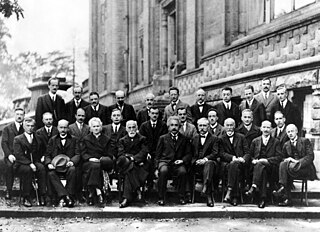 W
WA golden age of physics appears to have been delineated for certain periods of progress in the physics sciences, and this includes the previous and current developments of cosmology and astronomy. Each "golden age" introduces significant advancements in theoretical and experimental methods. Discernible time periods marking a "golden age" of advancements are, for example, the development of mechanics under Galileo (1564–1642) and Newton (1642–1727). Another small epoch seen as a golden age is the unification of electricity, magnetism, and optics because of 19th century notables, including Faraday, Maxwell, and others.
 W
WThe Golden Age of Piracy is a common designation for the period between the 1650s and the 1730s, when maritime piracy was a significant factor in the histories of the Caribbean, the United Kingdom, Indian Ocean states, North America, and West Africa.
 W
WThe Polish Golden Age refers to the Renaissance period in Poland and the Grand Duchy of Lithuania which lasted from the late 15th century to the death of Sigismund II Augustus, the last member of the Jagiellonian dynasty, in 1572. Some historians claim that the Golden Age continued until the mid-17th century, when in 1648 the Polish–Lithuanian Commonwealth was ravaged by the Khmelnytsky Uprising, and the Swedish invasion. During its Golden Age, the Commonwealth became one of the largest kingdoms of Europe, stretching from modern-day Estonia in the north, to Moldavia in the east, and Bohemia in the west.
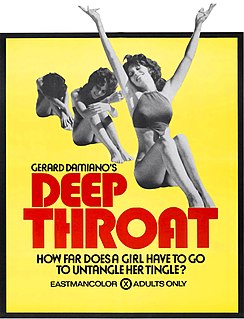 W
WThe term "Golden Age of Porn", or "porno chic", refers to a 15-year period (1969–1984) in commercial American pornography, which spread internationally, in which sexually explicit films experienced positive attention from mainstream cinemas, movie critics, and the general public. It began with release of the 1969 film Blue Movie directed by Andy Warhol, and the 1970 film Mona produced by Bill Osco. These films were the first adult erotic films depicting explicit sex to receive wide theatrical release in the United States. Both influenced the making of films such as 1972's Deep Throat starring Linda Lovelace and directed by Gerard Damiano, Behind the Green Door starring Marilyn Chambers and directed by the Mitchell brothers, 1973's The Devil in Miss Jones also by Damiano, and 1976's The Opening of Misty Beethoven by Radley Metzger. According to Warhol, Blue Movie was a major influence in the making of Last Tango in Paris, an internationally controversial erotic drama film, starring Marlon Brando, and released a few years after Blue Movie was made.
 W
WThe history of the Kingdom of Portugal from the Illustrious Generation of the early 15th century to the fall of the House of Aviz in the late 16th century has been named the "Portuguese golden age" and the "Portuguese Renaissance". During this period, Portugal was the first European power to begin building a colonial empire as Portuguese sailors and explorers discovered an eastern route to India as well as several Atlantic archipelagos and colonized the African coast and Brazil. They also explored the Indian Ocean and established trading routes throughout most of southern Asia, sending the first direct European maritime trade and diplomatic missions to Ming China and to Japan. The Portuguese Renaissance produced a plethora of poets, historians, critics, theologians, and moralists. The Cancioneiro Geral by Garcia de Resende is taken to mark the transition from Old Portuguese to the modern Portuguese language.
 W
WThe Golden Age of Radio, also known as the old-time radio (OTR) era, was an era of radio in the United States where it was the dominant electronic home entertainment medium. It began with the birth of commercial radio broadcasting in the early 1920s and lasted through the 1950s, when television gradually superseded radio as the medium of choice for scripted programming, variety and dramatic shows.
 W
WThe Golden Age of Roller Skating, from approximately 1937–1959, represents a period when roller skating was the number one participatory sport in America.
 W
WGolden Age of Russian Poetry is the name traditionally applied by philologists to the first half of the 19th century. It is also called the Age of Pushkin, after its most significant poet. Mikhail Lermontov and Fyodor Tyutchev are generally regarded as two most important Romantic poets after Pushkin. Vasily Zhukovsky and Konstantin Batyushkov are the best-regarded of his precursors. Pushkin himself, however, considered Evgeny Baratynsky to be the finest poet of his day.
 W
WThe first Golden Age of Television is the era of live television production in the United States, roughly from the late 1940s through the late 1950s. According to The Television Industry: A Historical Dictionary, "the Golden Age opened with Kraft Television Theatre on May 7, 1947, and ended with the last live show in the Playhouse 90 series in 1957;" the Golden Age is universally recognized to have ended by 1960, as the television audience and programming had shifted to less critically acclaimed fare, almost all of it taped or filmed.